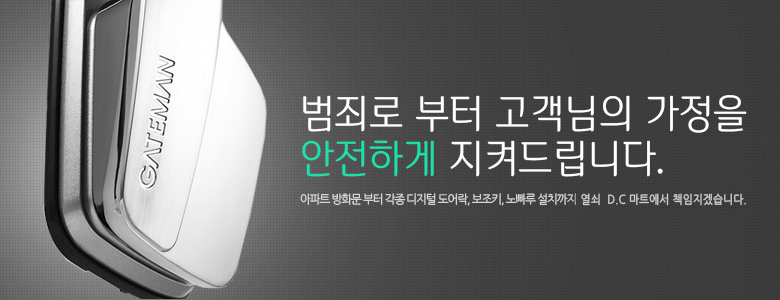What NOT To Do With The Fetal Distress Lawyer Industry
페이지 정보
작성자 Nancy 작성일24-12-31 07:12 조회3회 댓글0건본문
연락처 :
주소 :
희망 시공일 :
Fetal Distress Lawyers For Injurys Near Me
Fetal distress lawyers work to bring new rays of hope to families who have suffered from birth injuries resulting from medical negligence. They can help with:
A doctor may be held accountable for medical malpractice if they fail to detect the signs of fetal distress or neglect to treat them properly which results in death, injury lawsuits or any other harm. A fetal stress lawyer near me injury can examine your case to determine your legal options.
Delayed Diagnosis
Fetal distress is when a baby born is not receiving enough oxygen during labor or pregnancy. It is most often detected through the use of electronic fetal monitoring. It can cause permanent birth injuries if they are not promptly addressed by medical providers.
Midwives and doctors are trained to recognize the signs of distress in the fetus during labor and birth. They also need to pay attention to the health of the mother and her uterus to detect any possible issues that could affect the foetus. If a medical professional fails to spot fetal distress the resultant oxygen deprivation could result in serious injuries and complications, such as cerebral palsy, brain damage and even death.
Medical professionals must also be prepared to deliver a baby swiftly in an urgent situation. They should be prepared to perform a Cesarean and administer fluids and medications that will help the baby.
A physician's failure to identify and treat fetal distress can lead to serious injuries for both the baby and the mother. These injuries may include cerebral palsy as as other birth injuries such as hemorrhage or limb injury. These injuries are extremely difficult to treat and could result in long-term effects for the child.
If you or someone you love was injured during birth due to the carelessness of a healthcare provider, contact our experienced Buchanan Firm team right away. Our team will review your medical records to determine if the healthcare provider failed to take reasonable care when they identified or treated the condition of fetal distress.
Our birth injury lawyers can assist you in recovering damages for future and past medical expenses, and non-economic damages like pain and suffering. We have the expertise and resources to successfully pursue birth injury claims and hold accountable responsible parties for their negligence. Contact us today to arrange a no-cost consultation.
Oxygen Deprivation
Fetal distress occurs when a baby doesn't get enough oxygen prior to and after birth, or during the delivery. It can have many different causes, including low levels of oxygen in the mother's blood as well as compression of the umbilical cord during contractions.
Babies born with fetal distress are at risk of serious complications, such as brain injury lawyer and cerebral palsy. This is due to an inability to breathe for long periods during labor and pregnancy can cause irreparable brain injuries.
Midwives, doctors and nurses must be alert for any signs that the baby isn't healthy and should take immediate actions. Failing to do this can be considered medical malpractice, and put both the mother and child at high risk.
Pregnant women are at risk of having a fetal problem if they have an illness such as preeclampsia or gestational diabetia. The placenta is the channel through which the fetus receives oxygen from its mother. Any problems with this process can lead to stress on the fetus.
The majority of times the time, fetal distress is caused by a placental problem such as cord prolapse, or placental insufficiency. Fetal distress may be triggered by medical issues that affect the mother, like high blood pressure or a complication of labor like shoulder dystocia (where the baby's shoulders get stuck during delivery).
It is essential that doctors monitor closely the mother and spot warning signs of fetal distress and other medical emergencies so that they are in a position to act immediately. If they don't and the baby suffers injury or death, then the mother and her family could be entitled compensation for the medical costs, specialized care and discomfort she and her family experienced.
Fetal distress can be a very broad term, that isn't medically defined. It could mean various things. It is based on results of an electronic fetal monitor, and could be a false positive. The American College of Obstetricians and Gynecologists has suggested that doctors use the term "nonreassuring heart rate tracing" to prevent confusion and better explain the issue. These nonreassuring fetal heart rate patterns can include fetal tachycardia, bradycardia, repetitive decelerations and other irregularities.
Delivery Delayed
Fetal distress can occur when the fetus is subjected to oxygen-limiting stresses that compromise its nutrient and oxygen supply. It is usually an indication of serious complications during labor.
Doctors typically identify fetal distress by an abnormal heart rate pattern. This can be seen by an electronic fetal monitor, or via a hand-held Doppler ultrasound. These symptoms are caused by a variety of causes that can include problems with the placenta or umbilical cord or other health issues that affect mothers during pregnancy.
A baby who is deprived of oxygen for a prolonged period of time can suffer serious long-term consequences. This includes cerebral palsy, or even stillbirth. It is essential that doctors are aware and address any signs of distress in the fetus quickly.
The first step is bringing the fetus back into an oxygen-rich state. Based on the severity of the problem, this may require medications fluids, fluids, or a C-section delivery.
There are many issues that can cause distress for the fetus. This includes problems with the placenta or complications during labor. Placenta rupture is among the most hazardous situations. It occurs when the placenta splits before the baby is born. This can cause serious harm to the fetus and the placenta and could increase the risk of premature birth or death.
A prolapsed or swollen cord can cause problems, as it can cut off oxygen to the foetus. This can be due to various factors, including high blood pressure and infections in the mother. A low-lying placenta and twins or a breech birth are additional complications that could cause distress in the fetus.
If a physician fails to detect or react to signs of fetal distress, and the baby is injured, the mother and the child may bring a medical malpractice lawsuit. Our fetal stress lawyers have experience dealing with these kinds of cases and can assist mothers, children and their families obtain the compensation needed to cover the future medical expenses. Contact us today to find out more about your legal options.
Birth Injury
Fetal distress is a medical emergency and it's important that healthcare providers recognize warning signs to prevent complications. It's malpractice if they fail to and can result in serious injuries to the mother and child. Our medical malpractice team is able to assist you if you believe that your baby suffered a birth injury due to a medical professional's inaction on distress in the fetus.
It is vital that a medical professional detect symptoms of fetal stress, such as an abnormally high heartbeat, low oxygen levels or contractions. They must also know and be able to treat any conditions that increase the risk of distress in the fetus, for example, preeclampsia (a hypertensive pregnancy-related condition).
Once a health care provider has diagnosed fetal distress they should take immediate actions to safeguard both the baby and mother. This could involve putting the mother upside down or putting oxygen in a mask or an examination of the vagina to check for a prolapsed umbilical cord. If these interventions don't improve the situation, they must perform a C-section right away. If a health care fails to deliver a baby as soon as fetal stress is detected, this can lead to long-term injuries like cerebral palsy or other birth injuries.
If you think that the birth injuries of your child are due to a healthcare provider's failure to respond to fetal distress, it is imperative to consult with a seasoned lawyer. They can review the medical documents and your case to identify any errors that may be the cause of your child's birth injury.
A medical malpractice lawyer can also assist you in gathering all relevant medical documentation to support your claim for compensation. They can also handle communications with insurance companies on your behalf to negotiate an adequate settlement.
A well-planned legal strategy is a key component to securing an equitable financial award that covers both non-economic and economic injuries suffered by your family. Economic damages may include medical expenses, lost wages and the cost of continuing care. Non-economic damages include psychological and emotional traumas that can last a lifetime on your family.
주소 :
희망 시공일 :
Fetal Distress Lawyers For Injurys Near Me
Fetal distress lawyers work to bring new rays of hope to families who have suffered from birth injuries resulting from medical negligence. They can help with:
A doctor may be held accountable for medical malpractice if they fail to detect the signs of fetal distress or neglect to treat them properly which results in death, injury lawsuits or any other harm. A fetal stress lawyer near me injury can examine your case to determine your legal options.
Delayed Diagnosis
Fetal distress is when a baby born is not receiving enough oxygen during labor or pregnancy. It is most often detected through the use of electronic fetal monitoring. It can cause permanent birth injuries if they are not promptly addressed by medical providers.
Midwives and doctors are trained to recognize the signs of distress in the fetus during labor and birth. They also need to pay attention to the health of the mother and her uterus to detect any possible issues that could affect the foetus. If a medical professional fails to spot fetal distress the resultant oxygen deprivation could result in serious injuries and complications, such as cerebral palsy, brain damage and even death.
Medical professionals must also be prepared to deliver a baby swiftly in an urgent situation. They should be prepared to perform a Cesarean and administer fluids and medications that will help the baby.
A physician's failure to identify and treat fetal distress can lead to serious injuries for both the baby and the mother. These injuries may include cerebral palsy as as other birth injuries such as hemorrhage or limb injury. These injuries are extremely difficult to treat and could result in long-term effects for the child.
If you or someone you love was injured during birth due to the carelessness of a healthcare provider, contact our experienced Buchanan Firm team right away. Our team will review your medical records to determine if the healthcare provider failed to take reasonable care when they identified or treated the condition of fetal distress.
Our birth injury lawyers can assist you in recovering damages for future and past medical expenses, and non-economic damages like pain and suffering. We have the expertise and resources to successfully pursue birth injury claims and hold accountable responsible parties for their negligence. Contact us today to arrange a no-cost consultation.
Oxygen Deprivation
Fetal distress occurs when a baby doesn't get enough oxygen prior to and after birth, or during the delivery. It can have many different causes, including low levels of oxygen in the mother's blood as well as compression of the umbilical cord during contractions.
Babies born with fetal distress are at risk of serious complications, such as brain injury lawyer and cerebral palsy. This is due to an inability to breathe for long periods during labor and pregnancy can cause irreparable brain injuries.
Midwives, doctors and nurses must be alert for any signs that the baby isn't healthy and should take immediate actions. Failing to do this can be considered medical malpractice, and put both the mother and child at high risk.
Pregnant women are at risk of having a fetal problem if they have an illness such as preeclampsia or gestational diabetia. The placenta is the channel through which the fetus receives oxygen from its mother. Any problems with this process can lead to stress on the fetus.
The majority of times the time, fetal distress is caused by a placental problem such as cord prolapse, or placental insufficiency. Fetal distress may be triggered by medical issues that affect the mother, like high blood pressure or a complication of labor like shoulder dystocia (where the baby's shoulders get stuck during delivery).
It is essential that doctors monitor closely the mother and spot warning signs of fetal distress and other medical emergencies so that they are in a position to act immediately. If they don't and the baby suffers injury or death, then the mother and her family could be entitled compensation for the medical costs, specialized care and discomfort she and her family experienced.
Fetal distress can be a very broad term, that isn't medically defined. It could mean various things. It is based on results of an electronic fetal monitor, and could be a false positive. The American College of Obstetricians and Gynecologists has suggested that doctors use the term "nonreassuring heart rate tracing" to prevent confusion and better explain the issue. These nonreassuring fetal heart rate patterns can include fetal tachycardia, bradycardia, repetitive decelerations and other irregularities.
Delivery Delayed
Fetal distress can occur when the fetus is subjected to oxygen-limiting stresses that compromise its nutrient and oxygen supply. It is usually an indication of serious complications during labor.
Doctors typically identify fetal distress by an abnormal heart rate pattern. This can be seen by an electronic fetal monitor, or via a hand-held Doppler ultrasound. These symptoms are caused by a variety of causes that can include problems with the placenta or umbilical cord or other health issues that affect mothers during pregnancy.
A baby who is deprived of oxygen for a prolonged period of time can suffer serious long-term consequences. This includes cerebral palsy, or even stillbirth. It is essential that doctors are aware and address any signs of distress in the fetus quickly.
The first step is bringing the fetus back into an oxygen-rich state. Based on the severity of the problem, this may require medications fluids, fluids, or a C-section delivery.
There are many issues that can cause distress for the fetus. This includes problems with the placenta or complications during labor. Placenta rupture is among the most hazardous situations. It occurs when the placenta splits before the baby is born. This can cause serious harm to the fetus and the placenta and could increase the risk of premature birth or death.
A prolapsed or swollen cord can cause problems, as it can cut off oxygen to the foetus. This can be due to various factors, including high blood pressure and infections in the mother. A low-lying placenta and twins or a breech birth are additional complications that could cause distress in the fetus.
If a physician fails to detect or react to signs of fetal distress, and the baby is injured, the mother and the child may bring a medical malpractice lawsuit. Our fetal stress lawyers have experience dealing with these kinds of cases and can assist mothers, children and their families obtain the compensation needed to cover the future medical expenses. Contact us today to find out more about your legal options.
Birth Injury
Fetal distress is a medical emergency and it's important that healthcare providers recognize warning signs to prevent complications. It's malpractice if they fail to and can result in serious injuries to the mother and child. Our medical malpractice team is able to assist you if you believe that your baby suffered a birth injury due to a medical professional's inaction on distress in the fetus.
It is vital that a medical professional detect symptoms of fetal stress, such as an abnormally high heartbeat, low oxygen levels or contractions. They must also know and be able to treat any conditions that increase the risk of distress in the fetus, for example, preeclampsia (a hypertensive pregnancy-related condition).
Once a health care provider has diagnosed fetal distress they should take immediate actions to safeguard both the baby and mother. This could involve putting the mother upside down or putting oxygen in a mask or an examination of the vagina to check for a prolapsed umbilical cord. If these interventions don't improve the situation, they must perform a C-section right away. If a health care fails to deliver a baby as soon as fetal stress is detected, this can lead to long-term injuries like cerebral palsy or other birth injuries.
If you think that the birth injuries of your child are due to a healthcare provider's failure to respond to fetal distress, it is imperative to consult with a seasoned lawyer. They can review the medical documents and your case to identify any errors that may be the cause of your child's birth injury.
A medical malpractice lawyer can also assist you in gathering all relevant medical documentation to support your claim for compensation. They can also handle communications with insurance companies on your behalf to negotiate an adequate settlement.
A well-planned legal strategy is a key component to securing an equitable financial award that covers both non-economic and economic injuries suffered by your family. Economic damages may include medical expenses, lost wages and the cost of continuing care. Non-economic damages include psychological and emotional traumas that can last a lifetime on your family.
댓글목록
등록된 댓글이 없습니다.





